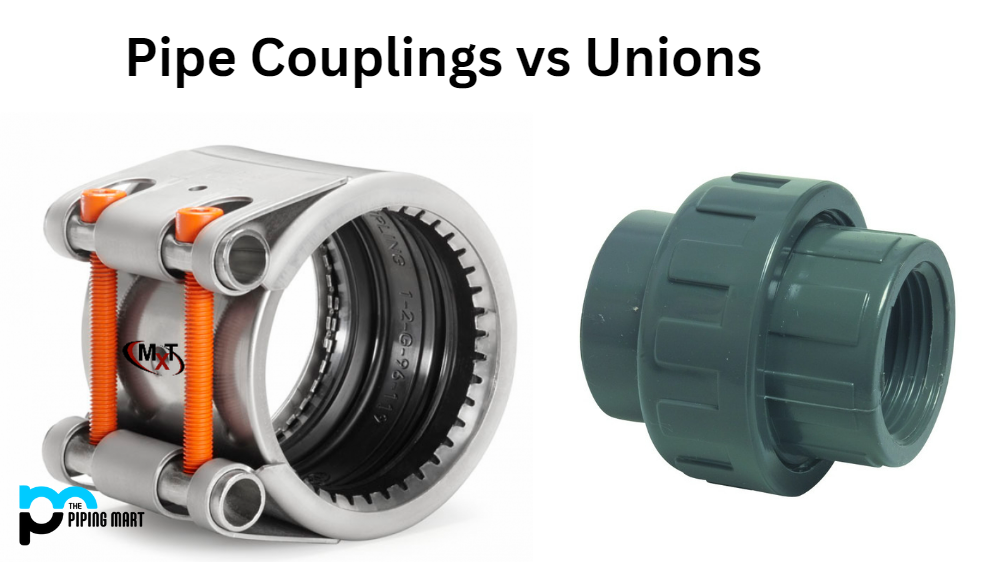Whether you’re an experienced plumber or a weekend DIY warrior, understanding the differences between pipe couplings and unions is essential for any plumbing job. This blog post will discuss the differences between these two types of fittings and how to choose the right one for your project.
Pipe Couplings
A pipe coupling is a short length of pipe used to connect two other pipes together. They can be made from any material, including galvanized steel, copper, PVC, or brass. The ends of the coupling feature female threads that allow it to be screwed onto the male threads on either end of the pipe. Pipe couplings are ideal for connecting pipes that are similar in diameter and have matching thread types.
Unions
Unlike pipe couplings, which permanently join two pipes, unions are fittings that allow pipes to be disconnected without having to cut them apart. Unions consist of three pieces—the nut and two halves that form the body—that screw together tightly around a gasket placed between them. Unions are usually made from stainless steel or brass and come in various sizes depending on the type of connected pipe. Unlike pipe couplings, unions don’t require both ends of the pipe to have matching threads to fit properly.
How To Choose The Right Fitting
Choosing between a union or a coupling depends on several factors, including location, materials available, budget, and space constraints. If you need to install piping in an area where it’s unlikely that you’ll need access again in the future (for example, in walls or ceilings), then a coupling would be best because it will create a permanent connection with no risk of leaks; however, if you need easy access at some point down the line, then unions are your best bet because they allow for quick disconnection if necessary. Consider your budget when selecting fittings; while unions tend to cost more than couplings due to their more complex design, they may be worth it if you anticipate needing access down the line at some point. Finally, ensure you measure your existing pipes carefully, so you know what size fitting will work best for your project before making any final purchasing decisions!
Difference Between Pipe Couplings and Unions
- A pipe coupling is a device used to connect two pipes together.
- A union is a type of fitting that allows for the connection and disconnection of two pipes.
- Pipe couplings are typically used to connect two pieces of pipe with the same diameter, while unions can connect pipes of different diameters.
- Pipe couplings are less expensive than unions and are typically used in applications where the pipes do not need to be disconnected often.
- Unions are more expensive than pipe couplings but are necessary for applications where the pipes need to be disconnected frequently.
- Both pipe couplings and unions are available in various materials, including brass, copper, plastic, and steel.
Conclusion:
It’s essential for anyone working with plumbing fixtures to understand how different types of fittings work so they can make informed decisions when selecting supplies for their project. Pipe couplings and unions serve other purposes, but both can be used effectively depending on needs such as location, available materials, budget constraints, and space requirements. By ensuring you measure accurately and select wisely based on your specific needs, you’ll have no problem choosing just the right fit for whatever job comes your way!
Meet Heer, a dynamic and driven writer learning tricks of her trade in the metal industry. With a background in Digital Marketing, Heer brings a unique perspective to her writing, sharing valuable insights. Apart from blogging she like reading and hiking.




